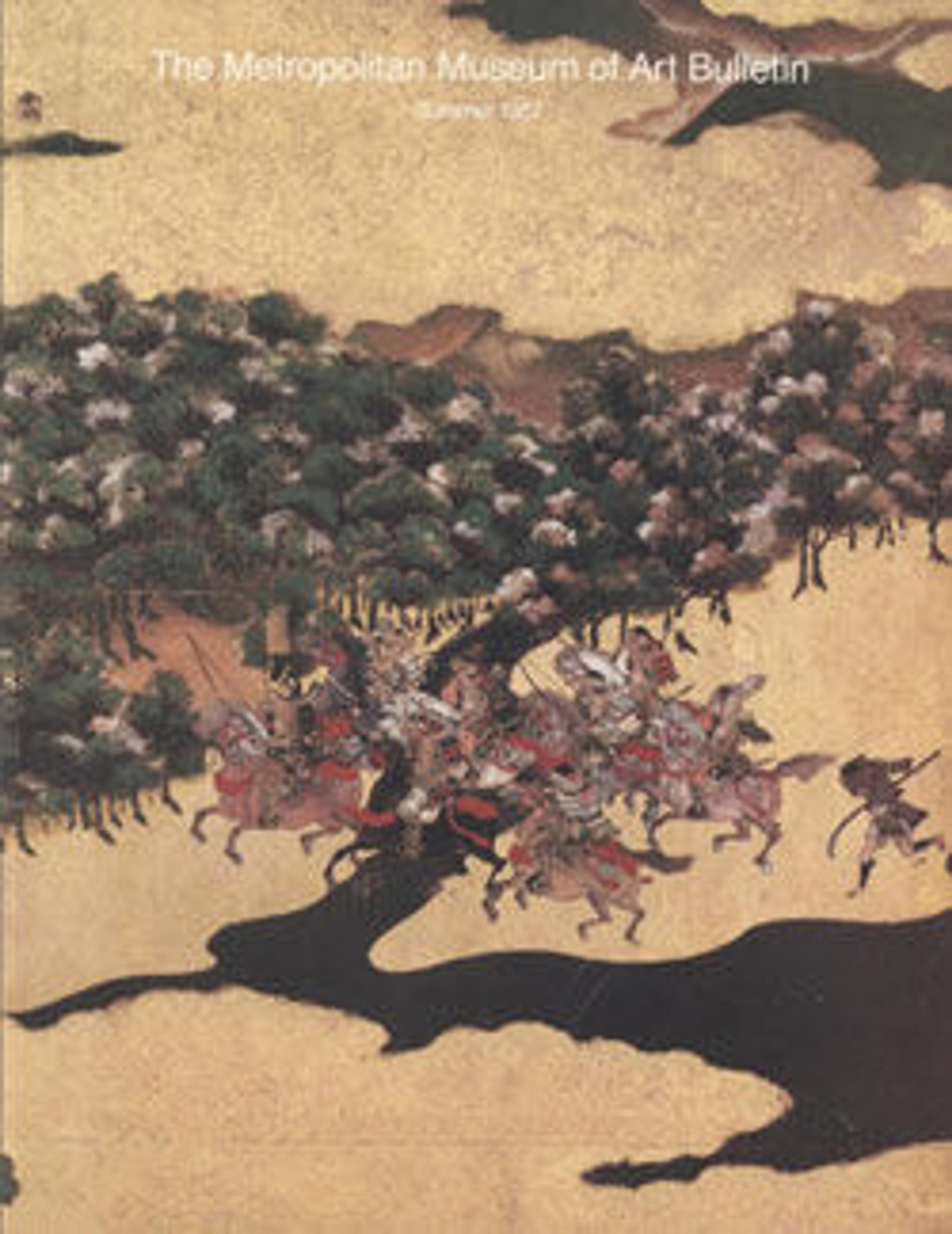Mirror (Shinjūkyō) Based on Han Dynasty Prototype with Cosmological Design
The Japanese “deity and beast mirror” (shinjūkyō) is an ancient type of round bronze mirror decorated with images from Chinese mythology and cosmology. The obverse of this example features a polished mirror, while relief representations of Chinese deities and legendary creatures decorate the reverse. As Chinese bronze-casting technology spread, these mirrors were produced in Japan, beginning in the Kofun period. Based on their mysterious ability to reflect all things (a property they share with swords and jewels), mirrors are attributed with profound religious significance and have been used in Shinto rituals since ancient times.
Artwork Details
- 神獣鏡
- Title: Mirror (Shinjūkyō) Based on Han Dynasty Prototype with Cosmological Design
- Period: Kofun period (ca. 300–710)
- Date: 4th–5th century
- Culture: Japan
- Medium: Bronze
- Dimensions: Diam. 7 3/4 in. (19.7 cm); D. 1/2 in. (1.3 cm)
- Classification: Mirrors
- Credit Line: The Harry G. C. Packard Collection of Asian Art, Gift of Harry G. C. Packard, and Purchase, Fletcher, Rogers, Harris Brisbane Dick, and Louis V. Bell Funds, Joseph Pulitzer Bequest, and The Annenberg Fund Inc. Gift, 1975
- Object Number: 1975.268.383
- Curatorial Department: Asian Art
More Artwork
Research Resources
The Met provides unparalleled resources for research and welcomes an international community of students and scholars. The Met's Open Access API is where creators and researchers can connect to the The Met collection. Open Access data and public domain images are available for unrestricted commercial and noncommercial use without permission or fee.
To request images under copyright and other restrictions, please use this Image Request form.
Feedback
We continue to research and examine historical and cultural context for objects in The Met collection. If you have comments or questions about this object record, please complete and submit this form. The Museum looks forward to receiving your comments.
